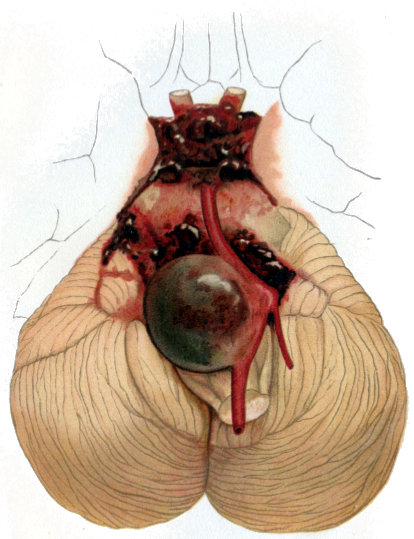Cerebral aneurysms are abnormal, local, dilatation of the arterial vessel wall. The vessel wall is mechanically weaker in the vicinity of the aneurysm. In some cases, the aneurysm can rupture, leaking blood into the space around the brain. The figure below (source: Wikipedia) shows a blood vessel in the brain (red) with a regional ballooning of the vessel wall.

Currently, aneurysms are classified based on their shape and size. The factors which lead to the rupture of an aneurysm are not well understood. Intuition suggests that a better understanding of the flow features in the aneurysm along with its morphology, may help in better characterizing the rupture risk.
For patients considered to be at risk, multiple treatment options are available. These include surgical clipping of the aneurysm dome, coiling the aneurysm, and flow diversion technique, where a flow-diverter device (similar to a stent, but with much higher density of wires) is placed to create a hemodynamic obstacle to flow entering the aneurysm.
Some research groups have utilized commercial Computational Fluid Dynamics (CFD) tools to analyze the flow in aneurysms. However, the use of these tools requires considerable engineering expertise, and is also very demanding of computational resources (number of processors, computational time).
Acknowledgements
This work was jointly done in collaboration with Viorel Mihalef, Puneet Sharma, Tiziano Passerini, Thomas Redel, Cosmin Nita, Takashi Suzuki and the help of multiple clinical collaborations partners .